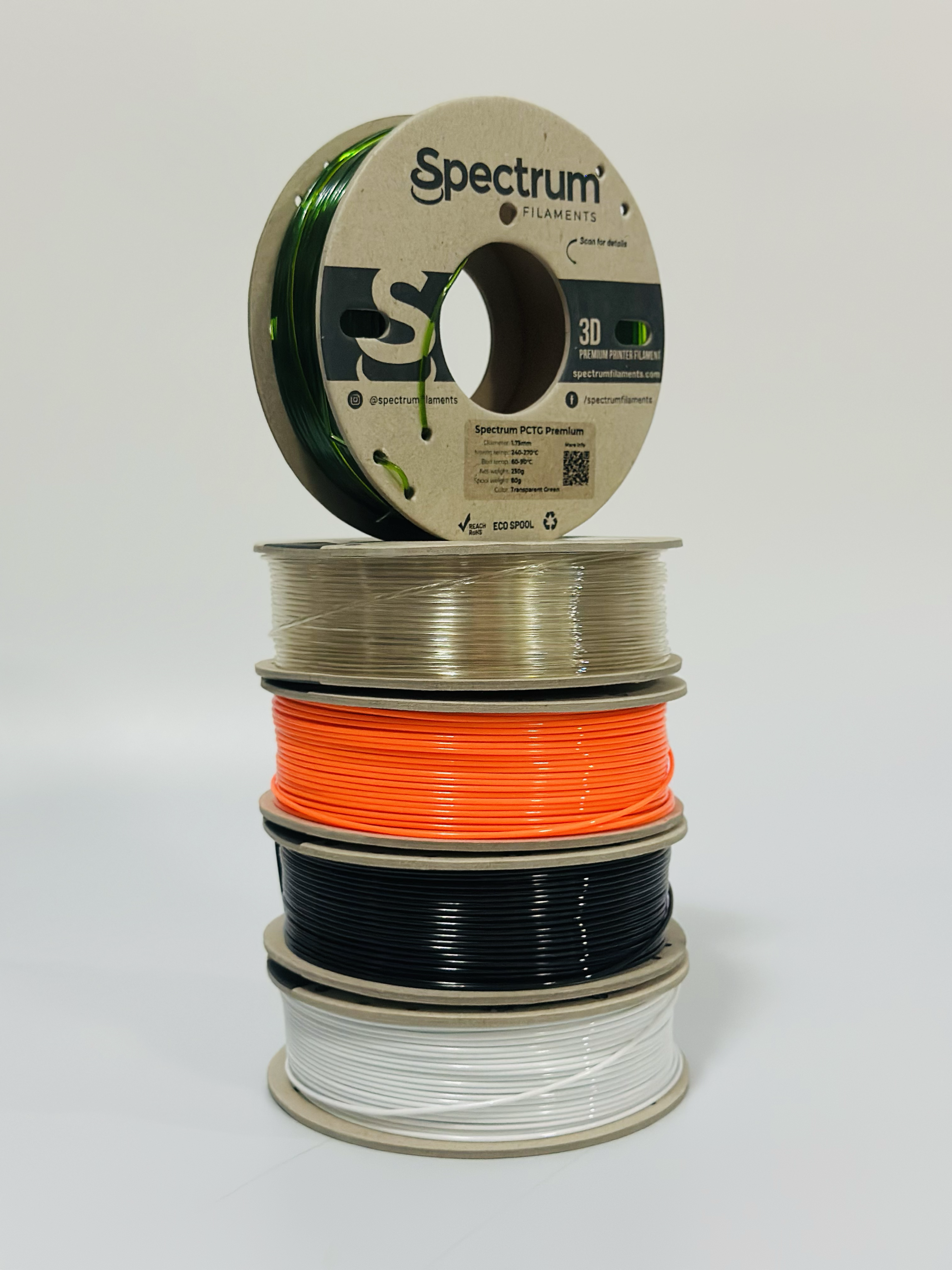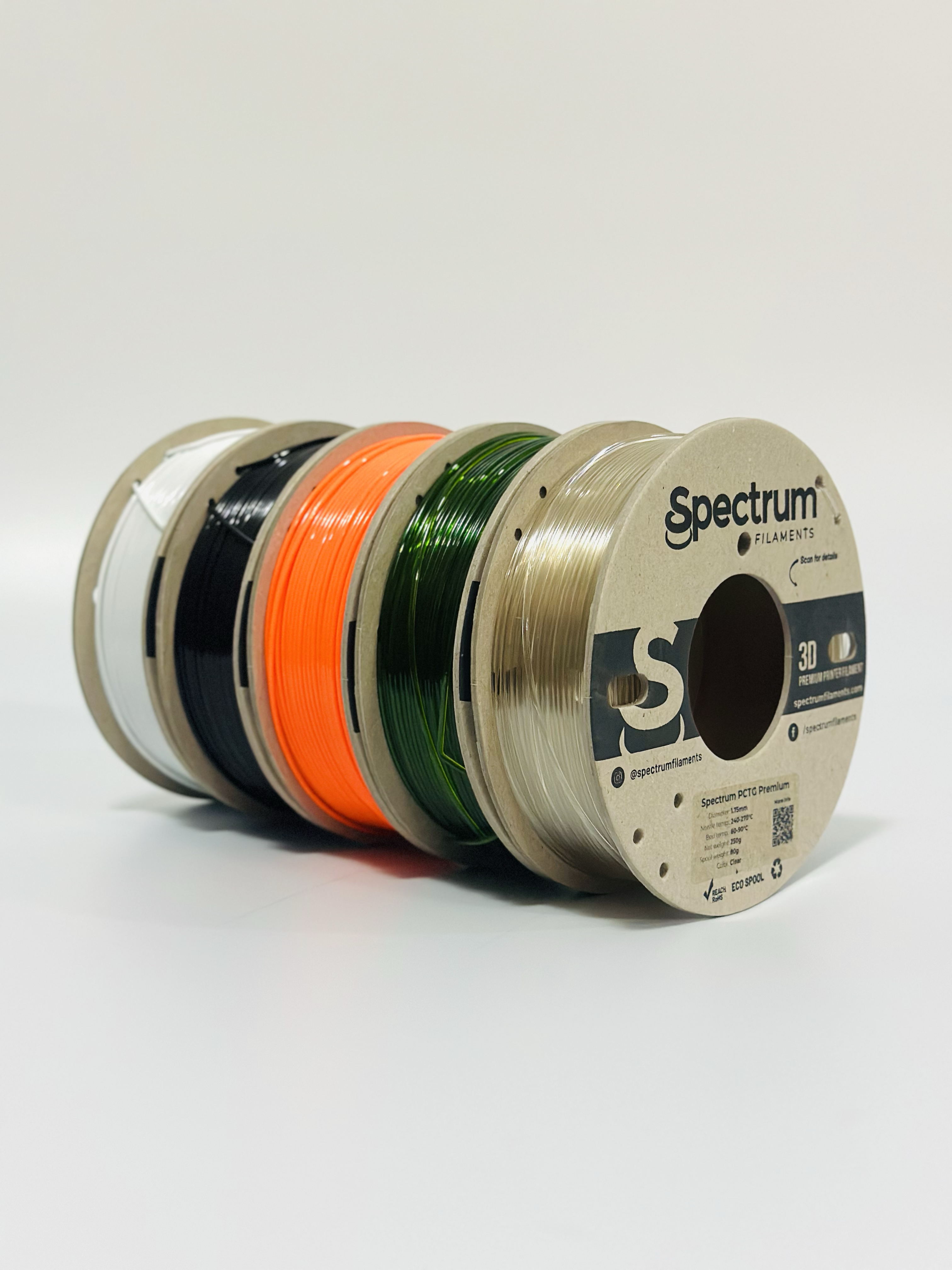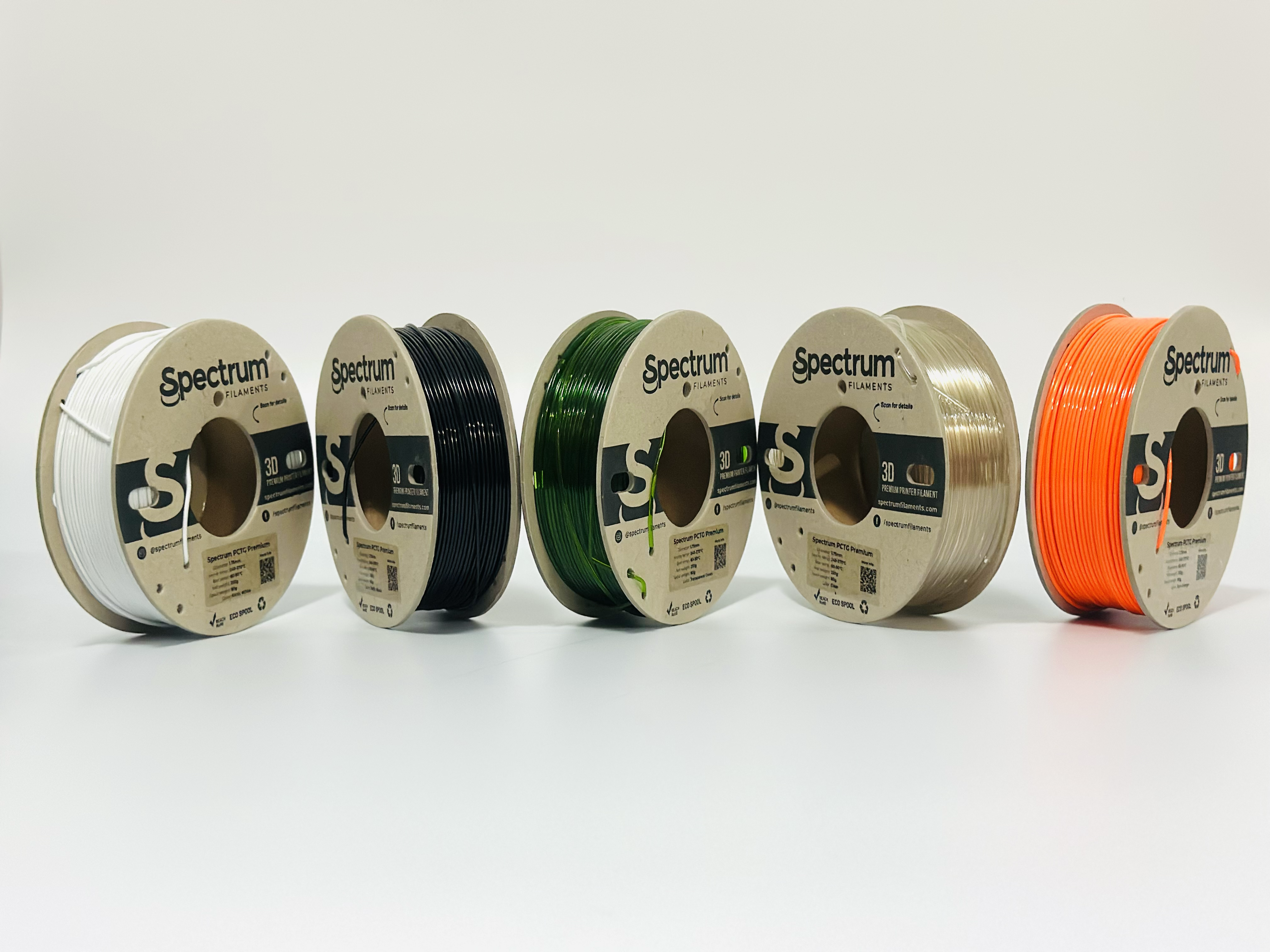Material Guide: PCTG

What is PCTG?
PCTG (PolyCyclohexylene Dimethylene Terephthalate Glycol) is a close relative of PETG, but it offers better impact strength, clarity, and chemical resistance. It’s a copolyester that combines the ease of printing of PETG with the toughness and stability of engineering-grade materials.
If you’ve printed PETG before, printing PCTG will feel familiar — but with improved mechanical performance and less brittleness.
PCTG an excellent choice for users who love the convenience of PETG but need higher performance for functional or mechanical parts.
Key Properties of PCTG
| Property | PCTG | PETG |
|---|---|---|
| Tensile Strength | High | Moderate |
| Impact Resistance | Excellent | Good |
| Transparency | Very High | High |
| Chemical Resistance | Excellent | Good |
| Heat Resistance | ~80–90°C | ~75–80°C |
| Ease of Printing | Easy | Easy |
| Warping | Minimal | Minimal |
Advantages of PCTG
Superior Impact Resistance
PCTG is up to 20 times more impact-resistant than PETG, making it ideal for applications that experience mechanical stress or shocks.
Optical Clarity
One of PCTG’s defining features is its exceptional transparency, which is often comparable to acrylic. It’s perfect for printing light covers, display parts, and containers where visibility matters.
Enhanced Heat Resistance
With a slightly higher glass transition temperature (Tg) than PETG, PCTG maintains rigidity better in warmer environments.
Chemical Resistance
It resists a wide range of chemicals, including cleaning agents and oils, making it suitable for industrial or laboratory parts.
Easy to Print
Despite its strength, PCTG maintains the low-warping, low-odor characteristics that make PETG so popular. It’s compatible with most printers that handle PETG or ABS.

Recommended Printer Settings for PCTG
| Parameter | Recommended Setting | Notes |
|---|---|---|
| Nozzle Temperature | 250–270 °C | Start at 255 °C and adjust based on your printer and filament brand. |
| Bed Temperature | 75–90 °C | A heated bed helps prevent warping and ensures good first-layer adhesion. |
| Print Speed | 30–60 mm/s | Slower speeds (30–40 mm/s) improve surface quality and layer bonding. |
| Layer Height | 0.15–0.3 mm | Standard range depending on print quality needs. |
| Cooling Fan | 30–60% | Too much cooling can reduce layer adhesion; moderate airflow is best. |
| Retraction Distance | 1–4 mm (Direct Drive) / 4–6 mm (Bowden) | Test with retraction tower to reduce stringing. |
| Retraction Speed | 25–40 mm/s | Slower than PLA to avoid oozing. |
| Build Surface | PEI, glue stick, or textured sheet | Helps prevent sticking too tightly and eases part removal. |
| Enclosure | Optional but recommended | Keeps temperature stable, reduces warping, and improves surface finish. |
Tips for Successful PCTG Printing
1. Dry the Filament
PCTG is hygroscopic — it absorbs moisture from the air.
Prints with wet filament may show bubbles, oozing, or rough surfaces.
Drying recommendation:
- 65 °C for 4–6 hours (in a filament dryer or oven).
- Store in an airtight container with desiccant.
2. Ensure Proper Bed Adhesion
PCTG adheres strongly to the print surface (sometimes too well).
To prevent damage:
- Use a glue stick or magigoo as a release layer.
- For glass beds, apply a thin adhesive film to ease removal.
- Level your bed precisely and set your first layer height correctly.
3. Avoid Overcooling
Unlike PLA, PCTG needs moderate cooling for proper layer bonding.
Too much fan speed can lead to layer separation or brittle prints.
- Keep fan below 60% and test incrementally.
4. Slow and Steady
PCTG performs best with slower print speeds.
Slowing down to around 40 mm/s yields better interlayer adhesion and surface finish.

Common Applications
- Functional mechanical parts
- Transparent enclosures and covers
- Tool handles and brackets
- Consumer goods and protective housings
- Containers for liquids or chemicals
- Light-diffusing or optical components
PCTG is particularly suited for functional prototypes and production parts that need durability and aesthetics in one.
PCTG vs. PETG: Which Should You Choose?
If you’re printing everyday household items or prototypes, PETG remains a cost-effective, reliable option.
However, if your project demands better impact strength, clarity, and toughness, PCTG clearly stands out as the superior choice — especially for professional and engineering-grade prints.
Conclusion
PCTG brings together the best of both worlds: the simplicity of PETG and the robustness of industrial-grade materials. Its balance of strength, clarity, and printability makes it one of the most versatile materials available for FDM 3D printing today.
Whether you’re producing a transparent mechanical part or a durable functional prototype, PCTG ensures reliability without compromise.
To know more about our offer regarding PCTG, you can click the link below.